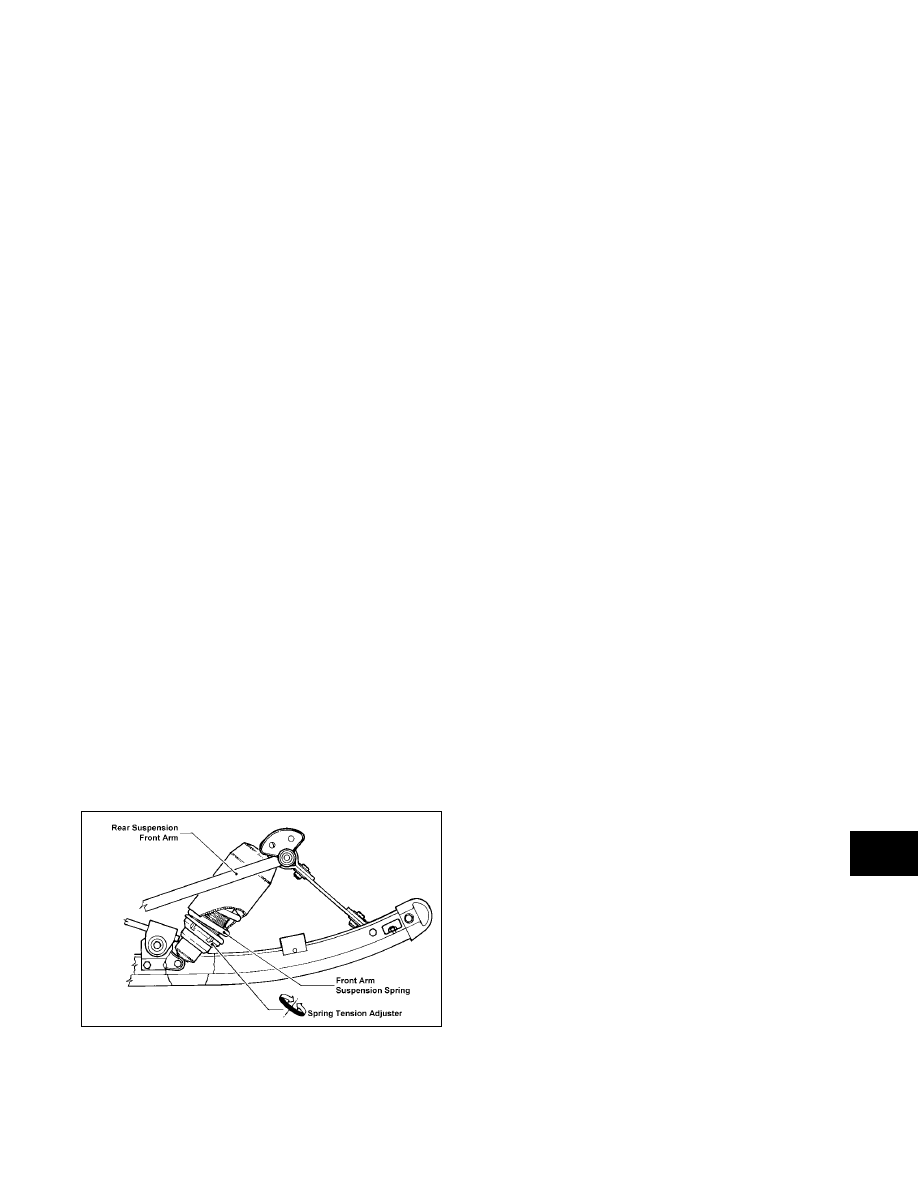Snowmobile Arctic Cat (2007 year). Manual - part 97

9
SUSPENSION SETUP BASICS
FRONT ARM SPRING TENSION
NOTE: Read the following information closely as
it pertains to all suspensions used in the last sev-
eral years. If there are any questions, please con-
tact the Arctic Cat Service Department.
It is desirable to run with very light front arm spring
tension. When riding in 4 in. or more of snow, the
machine will be quicker if the front spring tension is
adjusted lightly.
If the spring tension is adjusted too stiff, the track
angle at the front of the skid frame is steep. This
steep angle prevents the snowmobile from getting
up on plane and slows down by 5 to 8 mph.
When riding in sticky snow (springtime or warm
days) or hill climbing on hard snow, it may be desir-
able to stiffen the front arm spring tension. When
this is done, weight is transferred back quicker. The
problem with too much front arm spring tension is
that the feel of the snowmobile becomes very short.
The reason for this is the front arm becomes the
pivot point between the spindles and rear of the
machine. With dominant spring tension on the front
arm, the suspension is basically contacting the snow
from a point below the front arm to the skis or the
spindle pressure point. This makes for a very short
and darting machine on the trail. This is especially
true when decelerating and the center of gravity is
transferred forward.
A good method for adjusting the front spring tension
follows.
NOTE: On those models having a coil spring
over the front arm shock absorber, the spring ten-
sion should be set as soft as possible when oper-
ating on trails and in deep snow.
0729-662
FRONT ARM LIMITER STRAPS
Under no circumstances should the front arm limiter
strap be lengthened. If lengthened, it may cause
shock absorber travel problems.
The two limiter straps can be shortened if desired.
This adjustment must be made to suit driving style
and some test driving time. With the rear arm in its
present mounting location, no advantage has been
noted from changing the strap length. If the front
arm straps are shortened, the result will be more ski
pressure and aggressive steering.
SKI SHOCK ABSORBER SPRINGS
The shock absorber springs have been matched to
the shock valving and rear suspension. These
springs are the result of hours of testing and compar-
ison riding trying many different combinations of
springs and shocks. If there is a need to make
changes, there are several spring and shock sizes to
choose from. While making these changes, keep the
following points in mind.
Heavier Or Stiffer Springs
1. These will require shocks with more rebound
control, or the front end will become like a pogo
stick.
2. With stiffer springs, the front end will become
more aggressive in the corners as more weight
will be transferred to the skis when decelerating.
Also, more weight is transferred to the rear on
acceleration and can cause the rear shocks and
spring to bottom out.
3. If the springs are too stiff for general riding con-
ditions and style, the ride comfort is gone.
Spring Tension Too Soft
1. Front end bottoms out; hard on front end parts.
2. Less aggressive steering in corners on decelera-
tion, and less weight is transferred to the skis
because of softer springs.
3. Less weight gets transferred to rear of the
machine upon acceleration.